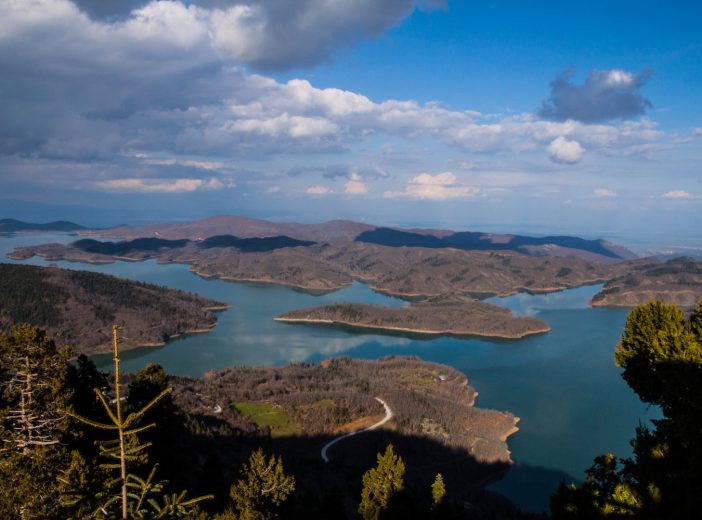Lake Plastira lies on the plateau of Nevropolis, on the western part of the Prefecture of Karditsa. It is an artificial lake, created by human intervention. It was formed in 1959, with the completion of the dam at the southern end of the Tavropos or Megdovas river. The idea for its creation is credited to Nikolaos Plastiras and the lake bears his name since, from when he first conceived of the project until his death, he zealously advocated for it. The dam is managed by the Greek National Power Company.
The depth of the lake varies, as it is determined by the original landscape of the area before it was flooded. It contains 400 million cubic meters of water, has a maximum length of 12 kilometers, a width of 4 kilometers, and an overall surface of 24 square kilometers. The maximum depth is 60 meters and the maximum elevation is 750 meters.
This is one of the rare occasions where human intervention led to the shaping of a natural environment of incomparable beauty, which has established the lake as one of the most renowned tourist destinations. Snow capped or in full bloom, in the fall or in spring, Lake Plastira offers images of rare beauty through a collage of varied landscapes, colors and sensations.
This undeniably grand project provided new impetus for growth and development to the entire area around it; it changed the region forever, creating unique benefits. The waters of the lake power the hydroelectric station, irrigate the plain of Thessaly, and provide water to the city of Karditsa and to 38 towns and villages in the Prefecture.
In recent years, the lake has been developed as a tourist destination and it attracts more and more visitors, who enjoy the beauty of the landscape and the excellent tourism infrastructure developed mainly along the western banks. Perched on the lake’s banks are guesthouses and hotels for every budget, offering panoramic lake views, as well as excellent restaurants and cafes; together with numerous opportunities for activities, the region meets the expectations of even the most demanding visitor. This form of development helps keep the region’s population intact and enables the establishment of new activities, focused mainly on mild forms of alternative tourism and on the growth and distribution of local agricultural products.













